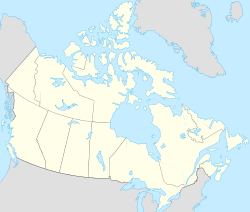Rankin Inlet
|
Rankin Inlet Kangiqliniq ᑲᖏᕿᓂᖅ |
|
|---|---|
 |
|
| Coordinates: 62°48′35″N 092°05′58″W / 62.80972°N 92.09944°WCoordinates: 62°48′35″N 092°05′58″W / 62.80972°N 92.09944°W | |
| Country | Canada |
| Territory | Nunavut |
| Region | Kivalliq Region |
| Electoral districts |
Rankin Inlet North-Chesterfield Inlet Rankin Inlet South |
| Government | |
| • Type | Hamlet Council |
| • Mayor | Robert Janes |
| • MLAs |
Tom Sammurtok Alexander Sammurtok |
| Area | |
| • Total | 20.24 km2 (7.81 sq mi) |
| • Population Centre | 2.59 km2 (1.00 sq mi) |
| Elevation | 28 m (92 ft) |
| Population (2016) | |
| • Total | 2,842 |
| • Density | 140/km2 (360/sq mi) |
| • Population Centre | 2,441 |
| • Population Centre density | 940/km2 (2,400/sq mi) |
| Time zone | CST (UTC-6) |
| • Summer (DST) | CDT (UTC-5) |
| Canadian Postal code | X0C 0G0 |
| Area code(s) | 867 |
| Telephone Exchange | 645 |
| GNBC Code | OANSI |
| NTS Map | 055K16 |
| Waterway | Hudson Bay |
| Website | www.rankininlet.net |
Rankin Inlet (Inuktitut: Kangiqliniq;Inuktitut syllabics: ᑲᖏᕿᓂᖅ or Kangirliniq, ᑲᖏᖅᖠᓂᖅ, or Kangir&iniq meaning deep bay/inlet) is an Inuit hamlet on Kudlulik Peninsula in Nunavut, Canada. Located on the northwestern Hudson Bay, between Chesterfield Inlet and Arviat, it is the regional centre for the Kivalliq Region.
In the 1995 Nunavut capital plebiscite, Iqaluit defeated Rankin Inlet to become territorial capital of Nunavut.
Archaeological sites established the area was inhabited around 1200 A.D. by Thule people, bowhead whale hunters. By the late 18th century, they were succeeded by Caribou Inuit who hunted the inland barren-ground caribou, and fished for Arctic char along the coast, as well as the Diane River and Meliadine River. The Hudson's Bay Company established itself throughout the bay in the 17th century, and after 1717, sloops from Churchill, Manitoba traded north to Rankin Inlet and beyond. There was an unfortunate expedition shipwrecked on Marble Island, 32 km east of Rankin Inlet: James Knight's expedition died in the island around 1722. It was surveyed by William Moor in 1747. HBC contact was followed in the mid-19th century by American and European whalers, who were followed by fur traders trapping white fox skins in the early 20th century, followed by missionaries who brought a written language system.
...
Wikipedia


